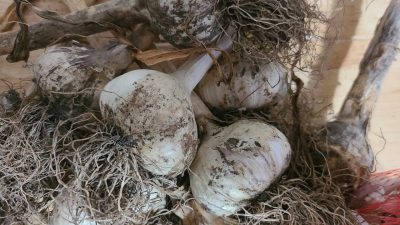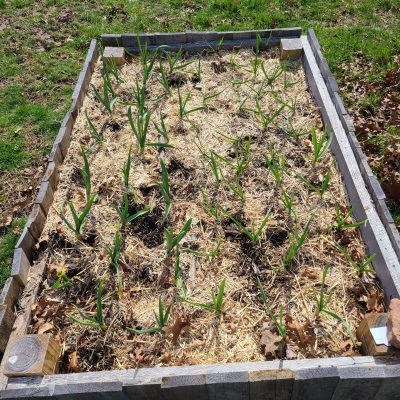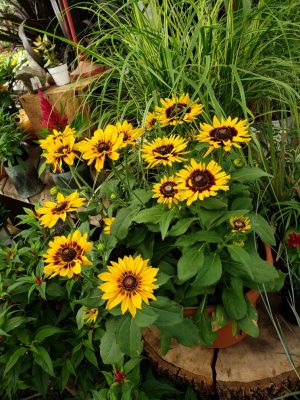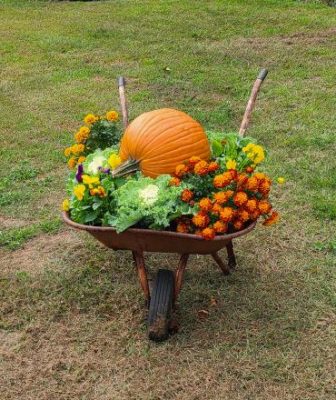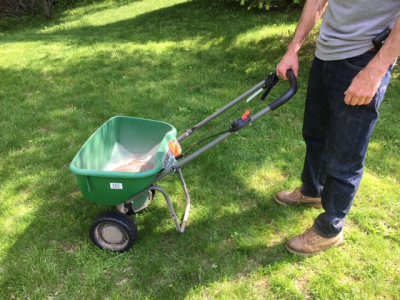By Dr. Avishesh Neupane, UConn Soil Nutrient Analysis Lab
If you shop for fertilizer in Connecticut this fall, you will see some labels missing from the shelves and more paperwork behind the ones that remain. The reason is new state rules targeting certain ingredients and how they are documented.
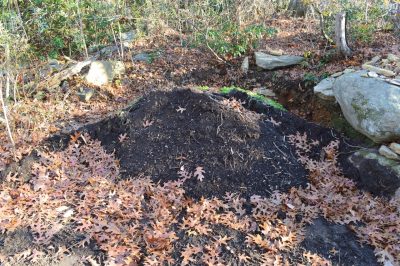 On October 1, 2024, Connecticut banned products made from biosolids or wastewater sludge that contain PFAS from being used or sold in the state as soil amendments. Biosolids are the treated solids left from wastewater treatment. Some products made from them were marketed for lawns and gardens in the past years. Connecticut’s new law closed that door to reduce PFAS in soils and runoff.
On October 1, 2024, Connecticut banned products made from biosolids or wastewater sludge that contain PFAS from being used or sold in the state as soil amendments. Biosolids are the treated solids left from wastewater treatment. Some products made from them were marketed for lawns and gardens in the past years. Connecticut’s new law closed that door to reduce PFAS in soils and runoff.
So what are PFAS and why the crackdown? Per- and polyfluoroalkyl substances, or PFAS, are a large class of “forever chemicals” added to products to resist water, grease, and stains. They do not break down easily and can build up in people, soil, and water. Health agencies have linked PFAS exposure to certain cancers, immune system effects, and developmental concerns, which is why Connecticut has been tightening rules to limit the entry of these chemicals into our environment.
Effective July 1, 2025, the legislature extended the PFAS biosolids restriction from soil amendments to fertilizers as well. The law also requires manufacturers and registrants to provide a certificate of compliance showing that any fertilizer or soil amendment that contains biosolids is free of PFAS. Products that do not meet the standard must be removed from Connecticut shelves.
What this means for your yard and vegetable beds is simple: expect fewer “biosolids-based” fertilizers on the market and expect clearer paperwork behind any products that remain. If you relied on those products for lawns or gardens, it is time to switch to other nutrient sources.
How can you read labels to avoid fertilizers and Soil amendments with PFAS?
- Check the ingredients panel. Look for words like “biosolids,” “sewage sludge,” “municipal waste,” or “residuals.” If you see those, consider a different product.
- Look for an analysis or ingredient list that spells out plant, animal, or mineral sources, such as feather meal, alfalfa meal, composted poultry manure, sulfate of potash, or rock-derived nutrients. These indicate non-biosolid ingredients.
- Ask your retailer. If a product contains biosolids, the maker must keep a certificate on file stating the product is compliant. Retailers should know whether a certificate exists for what they sell. If they cannot confirm, do not buy.
Safer sourcing ideas that are easy to find
- Start with a soil test. Match products and rates to what your soil actually needs. The UConn Soil Nutrient Analysis Laboratory provides routine tests with fertilizer and lime recommendations for home lawns and gardens.
- Yard-waste compost and leaf mulch made from leaves, grass clippings, and wood chips are reliable ways to add organic matter to the soil.
- Use animal-based fertilizers like composted poultry manure or feather meal, plant-based products like alfalfa meal, and mineral fertilizers like sulfate of potash and limestone.
- Biosolids are not allowed in certified organic production. “OMRI Listed” inputs follow the USDA National Organic Program, which prohibits sewage sludge. Choosing “OMRI Listed” products can be a practical way to avoid biosolids entirely.
A few quick FAQs
- Do I need to throw away the fertilizer I already own? Yes, but only if it contains PFAS or biosolids with PFAS. The new rules apply to the sale and use in the state. Contact your town’s household hazardous waste program for proper disposal guidance.
- Will PFAS show up on a routine soil nutrient test? Standard nutrient tests do not include PFAS. If you are concerned about legacy PFAS on a property that received biosolids, specialized testing is required. Your local Extension office can help you locate appropriate resources.
- What about compost from my town? Ask what goes into it. Compost made only from leaves, grass, wood, and animal waste is a safer choice for home gardens under the new rules.
Connecticut has removed PFAS-containing biosolids and fertilizer products from the garden marketplace. Expect clearer documentation from manufacturers and fewer sludge-based products on shelves. With a little label reading and a few ingredient swaps, you can keep building healthy soil while staying on the right side of the regulations.
The UConn Home & Garden Education Center supports UConn Extension’s mission by providing answers you can trust with research-based information and resources. For gardening questions, contact us toll-free at (877) 486-6271, visit our website at homegarden.cahnr.uconn.edu, or reach out to your local UConn Extension center at extension.uconn.edu/locations
This article was published in the Hartford Courant October 11, 2025
